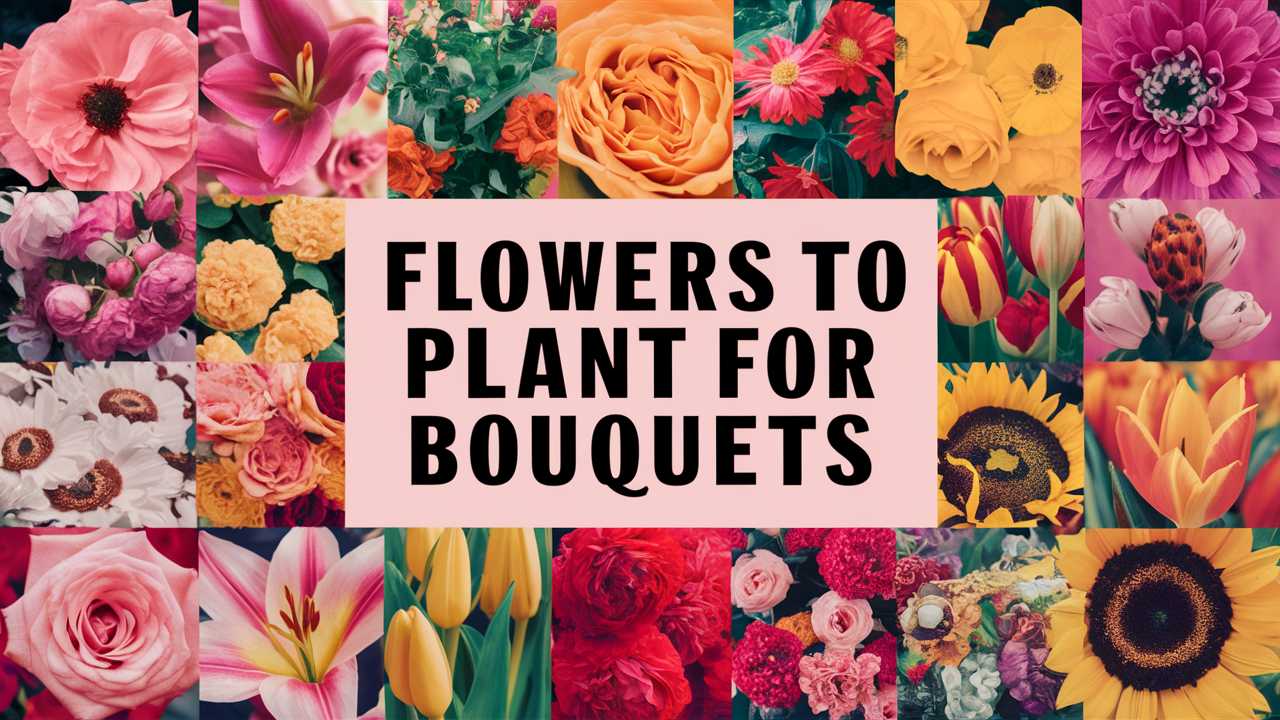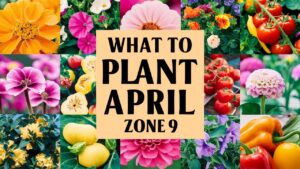This guide will explore a diverse range of flowers to plant specifically for bouquets, discussing their unique characteristics, care requirements, and how best to blend them into stunning compositions.
Lavender
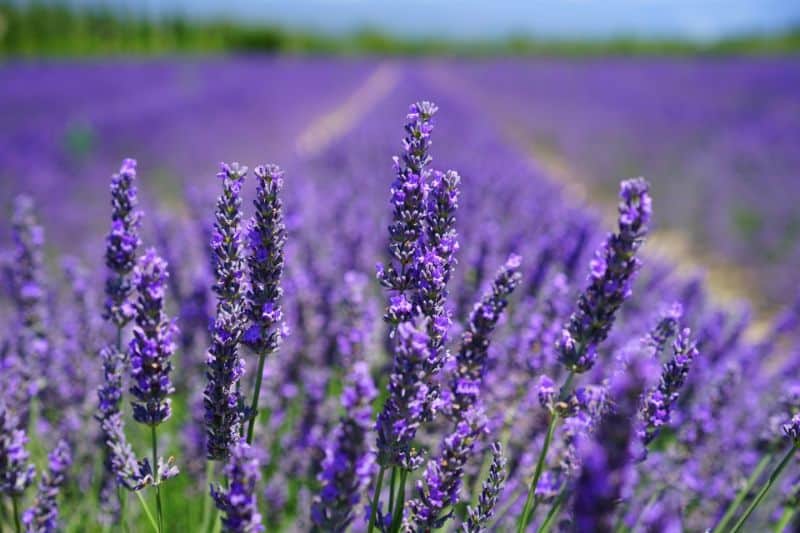
Lavender (Lavandula) is renowned for its delicate beauty and soothing aroma. This perennial herb thrives in full sun and well-drained sandy or gravelly soils. Lavender is a wonderful choice for bouquets as it retains its fragrance even when dried, adding a distinct sensory element to arrangements. The flowers bloom in shades of purple, blue, and violet, which can beautifully complement other blooms.
Plant lavender in clusters for a lush look, and consider pairing it with white or yellow flowers like daisies or sunflowers for a bright contrast. Not only does lavender enhance bouquets visually, but it also attracts beneficial pollinators like bees and butterflies. For a longer-lasting display, cut the lavender stems in the morning when the oils are at their peak.
Zinnia
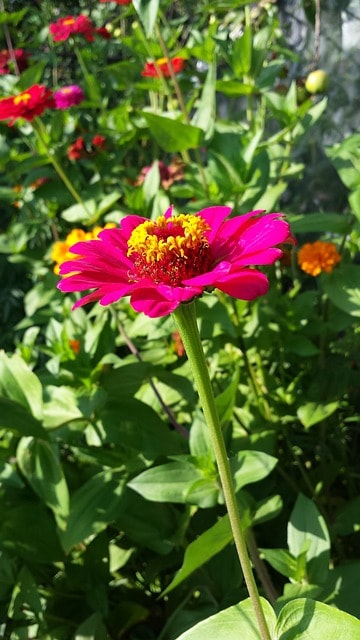
Zinnias are jubilant, brightly colored annuals that bring joy to any bouquet. Their daisy-like blooms come in various hues, including pink, orange, yellow, and red. Zinnias are exceptionally easy to grow from seed, making them perfect for beginner gardeners. They flourish in full sun and can tolerate drought, making them a hardy choice.
For bouquets, the long stems of zinnias can be cut and arranged to create breathtaking focal points. They pair wonderfully with other vibrant flowers like cosmos and marigolds, creating a visually striking medley. Additionally, zinnias are known for their ability to last long in vases, making them a favorite for fresh arrangements.
Dahlia
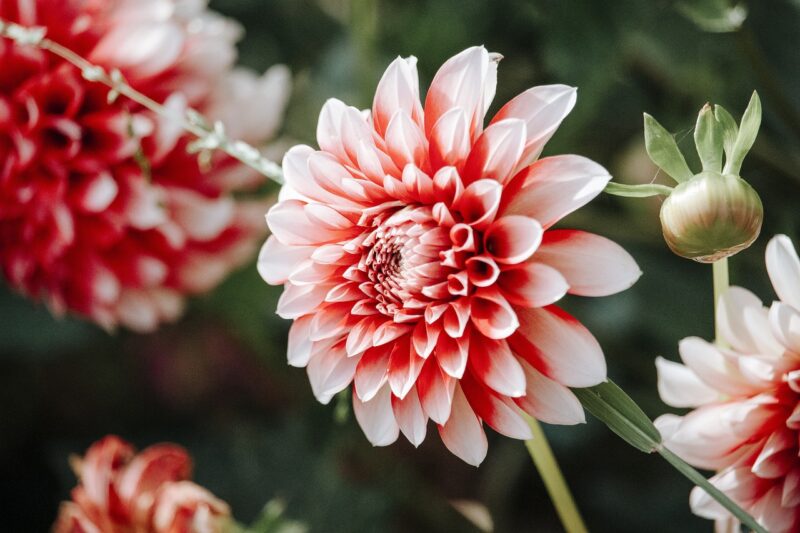
With their stunning array of colors and intricate petal designs, dahlias are a must-have for any bouquet enthusiast. These summer-blooming perennials come in various shapes, sizes, and shades, from soft pastels to deep jewel tones. Dahlias thrive in well-drained soil and require regular watering to truly flourish.
Their unique form makes them excellent focal flowers in arrangements, bringing structure and elegance. A bouquet featuring dahlias paired with softer flowers, like peonies or sweet peas, can create a striking contrast. Furthermore, dahlias can be cut throughout the blooming season, ensuring a continuous supply of these beautiful flowers for your creations.
Strawflowers
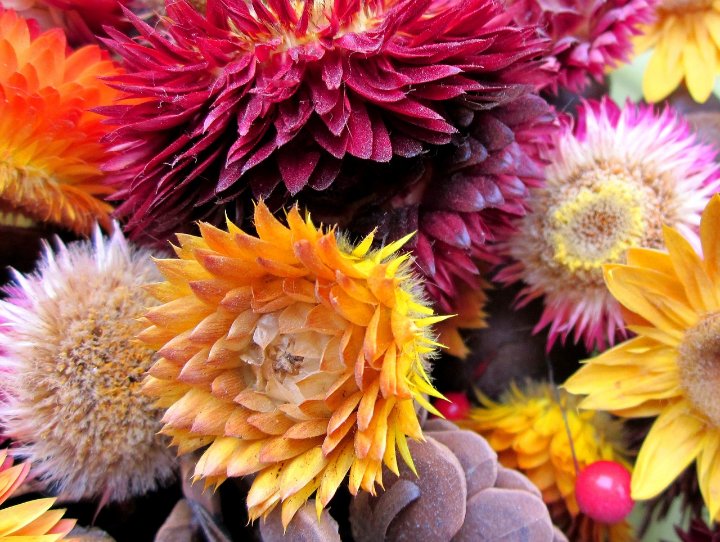
Strawflowers (Helichrysum bracteatum) are a gardener’s delight, known for their papery texture and vibrant colors that resemble a classic dried flower look. They are excellent for drying, retaining their shape and color remarkably well. Growing strawflowers is relatively simple; they prefer well-drained soil and full sun.
When planting for bouquets, consider combining strawflowers with delicate blooms such as lavender or yarrow to create an appealing balance of textures. Their durability makes them perfect for rustic or dried arrangements that you can enjoy throughout the year. Additionally, strawflowers are also attractive to pollinators, making them a practical addition to your garden.
Sweet Pea
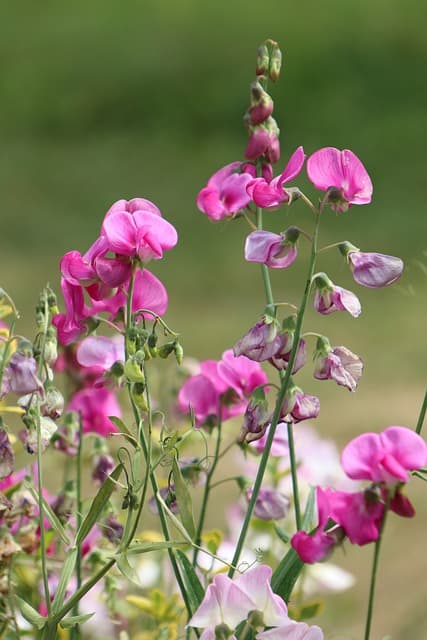
Sweet peas (Lathyrus odoratus) possess a beguiling fragrance and delightful blooms that are perfect for romantic bouquets. These climbing annuals thrive in cool weather and do best when sown in early spring. Sweet peas come in a variety of colors, including pastels and deep shades, making them versatile for different bouquet styles.
For bouquets, sweet peas can be used to create cascading arrangements, intertwining with other flowers like snapdragons and roses. Their sweet scent adds an enchanting aura to any bouquet and evokes nostalgic feelings of spring. Support their growth by providing trellises or cage systems to allow them to flourish beautifully.
Snapdragons
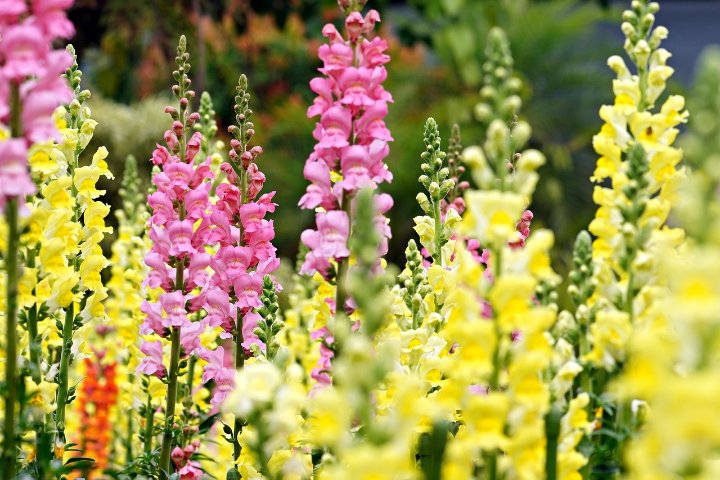
Snapdragons (Antirrhinum majus) are characterized by their tall flower spikes adorned with tubular blossoms resembling whimsical dragon mouths. Available in a rich palette of colors, snapdragons bloom throughout the cooler months of spring and fall. They prefer full sun and moist, well-drained soils.
In bouquets, snapdragons contribute vertical interest and can be arranged in various styles, from formal to wildflower-inspired. Pair them with softer flowers like sweet peas for contrast, or integrate them with zinnias for a vibrant explosion of color. Their unique shape makes them a favored choice in flower arrangements, helping to create stunning visual dynamics.
Sunflowers
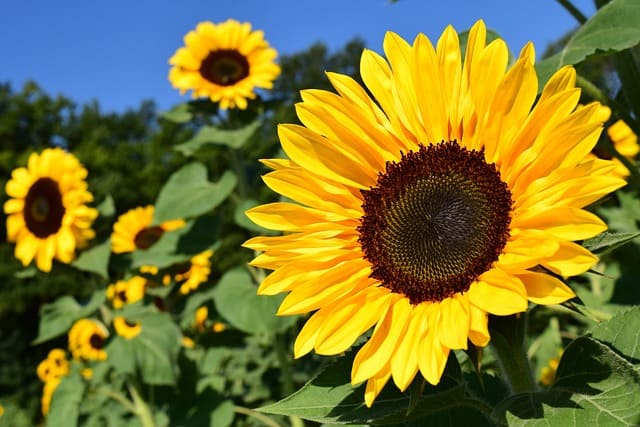
Sunflowers (Helianthus annuus) radiate cheerfulness with their large, bold blooms. Often associated with warmth and positivity, these towering annuals thrive in well-drained soil and full sun. Sunflowers come in various sizes, from small varieties suitable for bouquets to giant blooms that can reach impressive heights.
When used in bouquets, sunflowers add a striking focal point and can be paired with delicate fillers like baby’s breath or lush greens. Their bright yellow petals contrast beautifully with deep burgundy or purple flowers, creating eye-catching arrangements. Enjoying sunflowers in your bouquet is like incorporating a little slice of summer all year round!
Black-eyed Susans
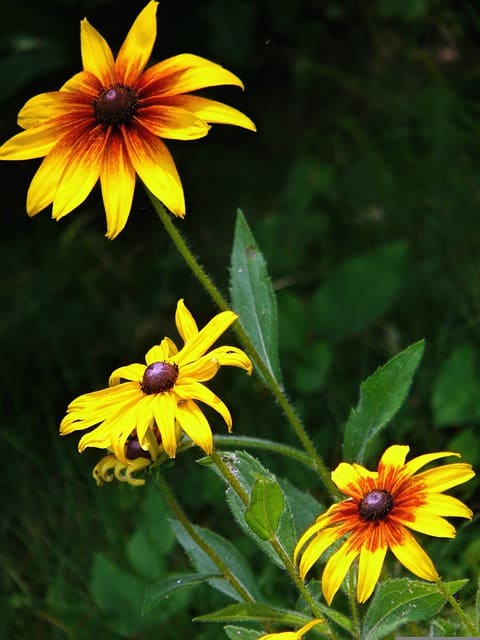
Black-eyed Susans (Rudbeckia hirta) are treasured for their daisy-like appearance, featuring golden yellow petals and dark brown centers. These hardy perennials thrive in various soil conditions and are fond of full sun. They bloom from summer to fall, making them a staple for seasonal bouquets.
In arrangements, black-eyed Susans can provide excellent pops of color, especially when paired with muted tones like lavender or white lilies. Their native plant appeal adds a charming, wildflower touch to bouquets. Plus, they attract pollinators like bees and butterflies, contributing to a healthy garden ecosystem.
Marigolds
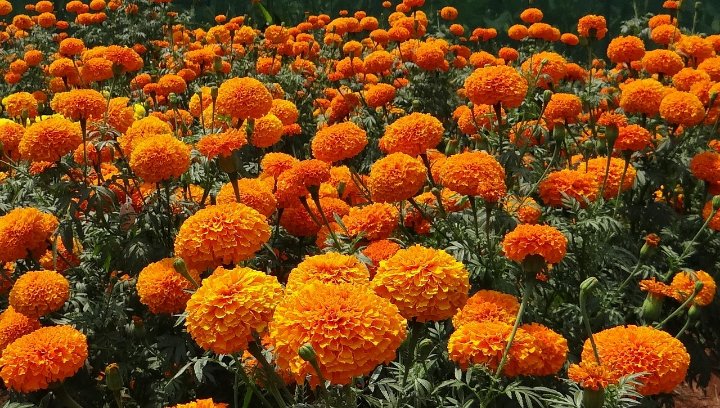
Marigolds (Tagetes) are often celebrated for their vibrant colors and long blooming period. With bright orange, yellow, and red hues, these annual flowers can lighten up any bouquet. Marigolds prefer sunny environments and well-drained soil and are often planted as companion plants thanks to their pest-repelling qualities.
In bouquets, marigolds are versatile; they can be used as cheerful fillers or bold focal points. Their frilled edges create a wonderful texture that complements smoother petals of other flowers. Combine them with zinnias or dahlias for a lively arrangement that bursts with summer vibes.
Hydrangea
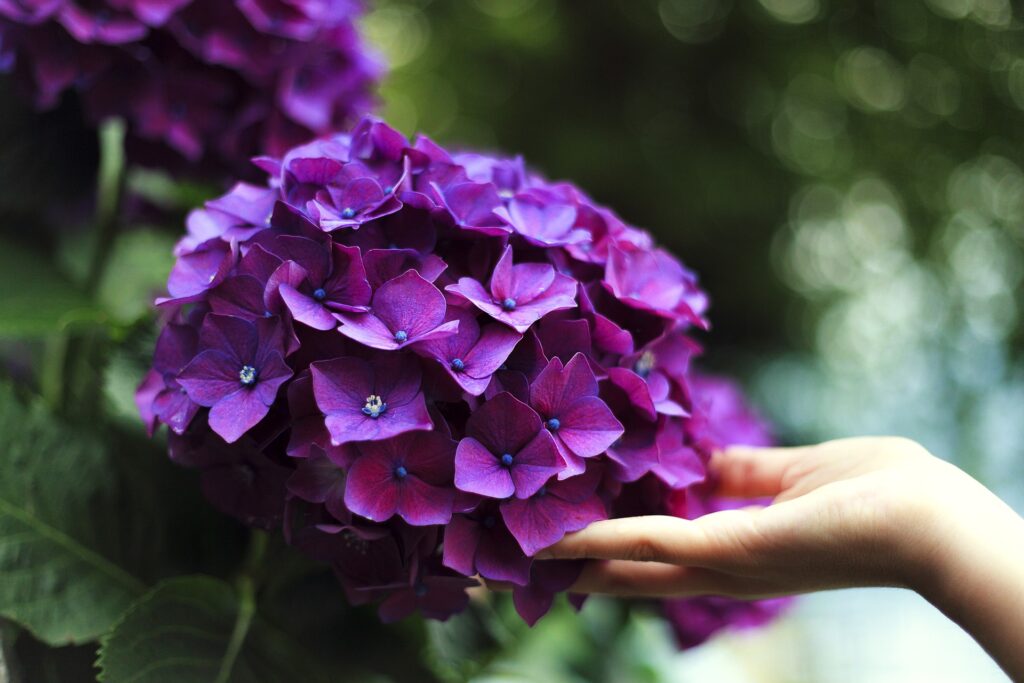
Hydrangeas are a beloved choice for bouquets, especially when seeking romantic or vintage appeal. Known for their voluminous clusters of flowers in colors ranging from soft blue to pink and white, hydrangeas can significantly enhance your floral arrangements. They flourish in well-drained, moist soils with partial shade.
Their large blooms are perfect for making impactful arrangements. A bouquet of hydrangeas combined with roses or peonies creates a lush, opulent effect, making them popular for weddings. Hydrangeas can also be dried, allowing you to enjoy their beauty far beyond their growing season.
Roses
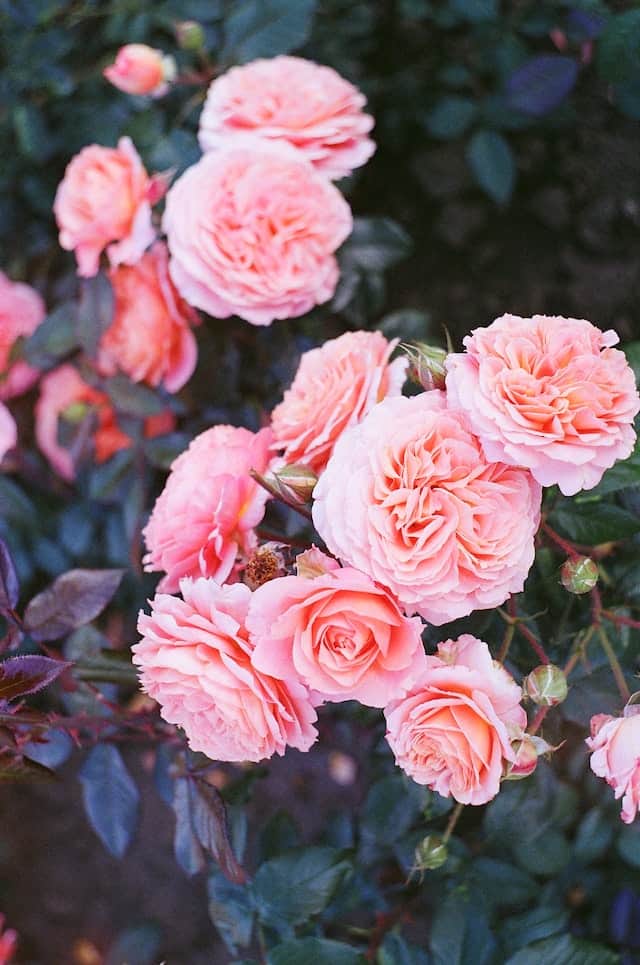
Roses are the quintessential bouquet flower, symbolizing love and beauty. Available in countless varieties, colors, and fragrances, they cater to a wide range of preferences. Their care can vary, but they generally thrive in sunny locations with well-drained soil.
Roses are incredibly versatile in bouquets; their elegant shape can form the central focus or complement other flowers beautifully. Combine red roses with white lilies for a classic look or mix them with sunflowers for a more contemporary feel. Regardless of choice, roses will always evoke emotion and make a lasting impression in any floral arrangement.
Lisianthus
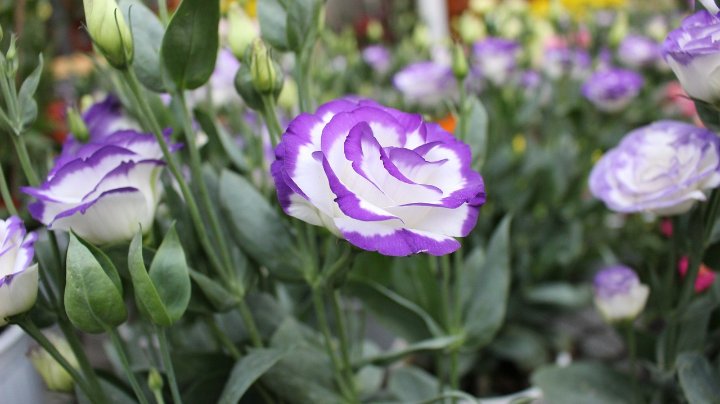
Lisianthus (Eustoma grandiflorum) is an elegant flower that resembles a rose with its delicate, layered petals. They come in a spectrum of colors, from soft pastels to vivid tones, and bloom throughout the summer months. These flowers prefer well-drained soil and thrive in full or partial sun.
In bouquet arrangements, lisianthus adds sophistication and depth. Their romantic appearance partners well with flowers like peonies or dahlias, creating compositions that are visually rich and emotionally stirring. They also have a long vase life, making them an excellent choice for enduring bouquets.
Ranunculus
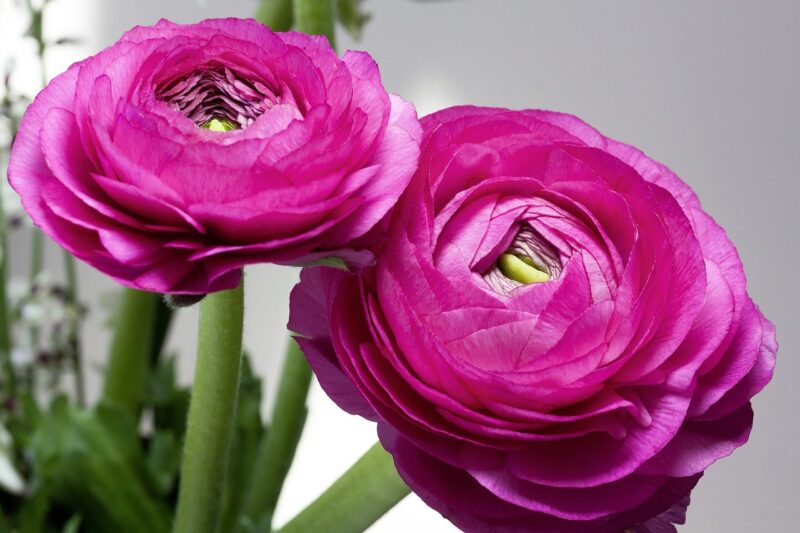
Ranunculus are charming flowers with ruffled petals that create a soft, romantic effect in bouquets. Available in vibrant hues and delicate pastels, these flowers flourish in cool climates and well-drained soil. They are often planted in early spring and can bloom until late spring and early summer.
When crafting bouquets, ranunculus can be used as delightful fillers or statement flowers. Their layered petals offer visual interest; combine them with sweet peas for a charming spring arrangement or pair them with more robust blooms for dramatic contrast.
Yarrow
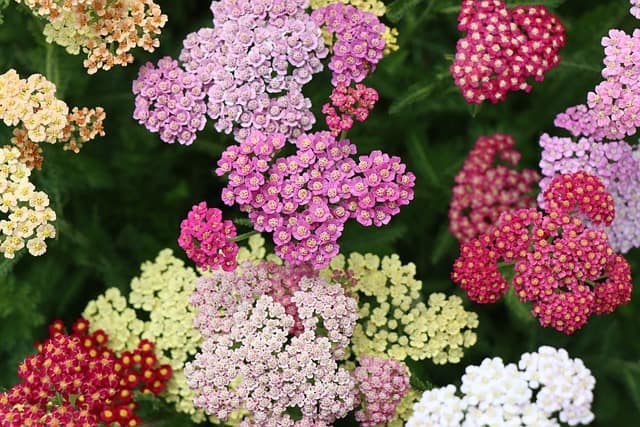
Yarrow (Achillea millefolium) is a fragrant perennial known for its feathery foliage and flat-topped clusters of tiny flowers. Available in various colors, including yellow, pink, and white, yarrow is easy to grow and thrives in poorer soils and full sun, making it an ideal choice for low-maintenance gardens.
This hardy flower can serve as an excellent filler in bouquets, adding softness and texture. Yarrow pairs well with stronger blooms like sunflowers and dahlias, seamlessly blending wildflower charm into an arrangement. Moreover, yarrow attracts butterflies, enhancing the ecological vibrancy of your garden.
Celosia
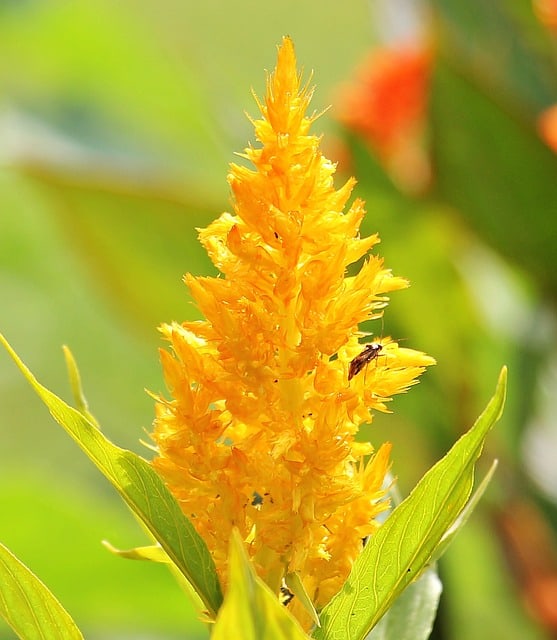
Celosia, often called cockscomb, is an eye-catching annual flower that brings an unusual texture and vibrant color to bouquets. Its unique shape, resembling a brain or coral, creates visual intrigue. These flowers prefer warm weather and thrive in well-drained soil.
In bouquets, celosia can add a striking focal point or an unusual texture that complements more traditional flowers. Pair celosia with zinnias or marigolds for a lively arrangement that encapsulates summer vibrancy. Plus, celosia is also hardy in dried arrangements, allowing you to enjoy its beauty even longer.
Amaranth
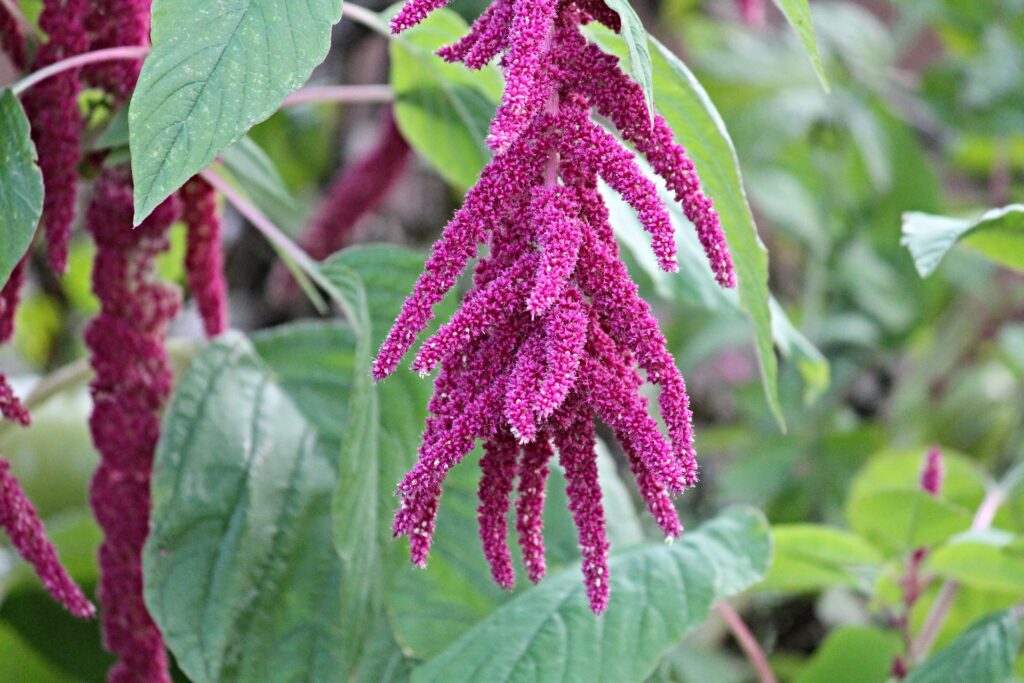
Amaranth is an ancient and versatile plant, celebrated for its rich history and striking appearance. These flowers bloom in various colors, featuring plumes that add elegance and texture to arrangements. Amaranth thrives in sunny locations with well-drained soils.
When included in bouquets, amaranth offers height and drama, often used as an accent flower to frame other blooms. Its deep red or vibrant green can enhance fall arrangements or add unique contrast to summer bouquets. The dried form is equally stunning, providing texture and color year-round.
Anemone
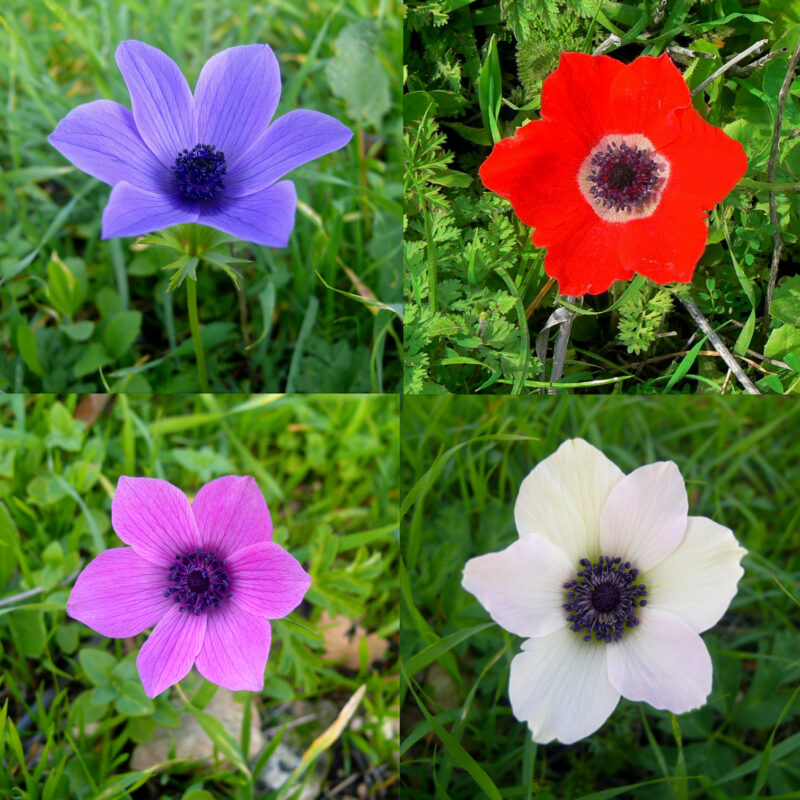
Anemones are delicate flowers that captivate with their bold colors and striking center. Available in various shades, including blue, purple, white, and pink, these flowers bloom in late winter or early spring. Anemones prefer well-drained soils and cooler temperatures, making them an excellent choice for seasonal bouquets.
In arrangements, anemones can be used as exciting focal points, creating captivating centerpieces when combined with softer flowers like tulips or freesia. Their unique shape and color can add depth to floral designs, making them a wonderful addition for any bouquet enthusiast.
Poppy
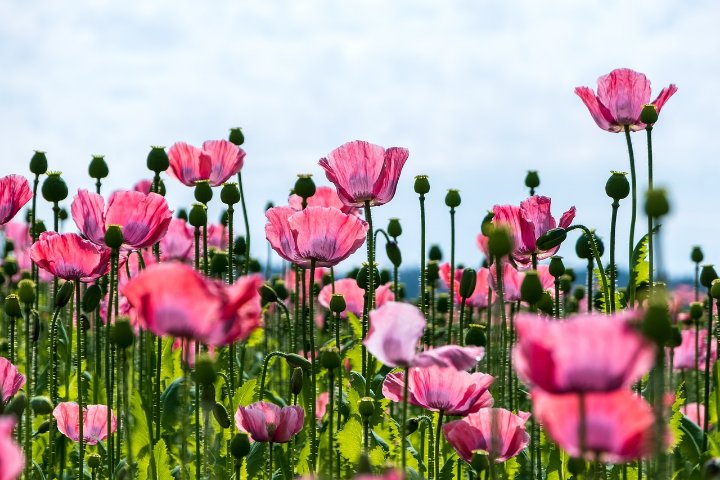
Poppies are radiant, iconic flowers featuring large, vibrant blooms that symbolize peace and remembrance. Available in an array of colors, including red, orange, yellow, and blue, poppies are often seen in gardens blooming in early summer. They prefer sunny spots and well-drained soil.
When used in floral arrangements, poppies bring a sense of whimsy and elegance. Their unique petals add softness and visual interest, pairing harmoniously with more structured blooms like snapdragons or peonies. Their ephemeral nature makes them a special treat, as they create bouquets that are fleetingly beautiful.
Carnation
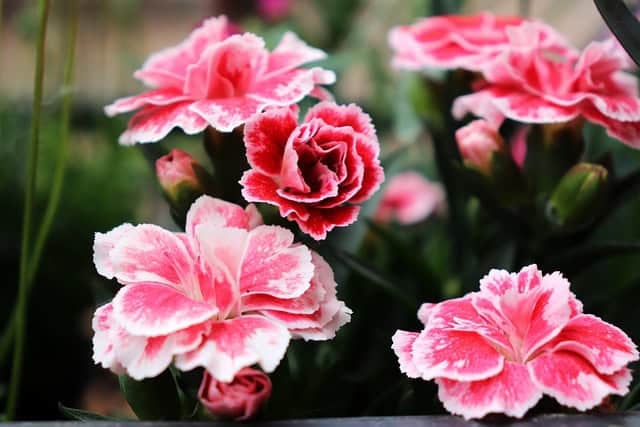
Carnations (Dianthus caryophyllus) are classics in the floral world, known for their ruffled, graceful petals and long-lasting blooms. Available in virtually every color, carnations are easy to grow and thrive in full sun. Their resilience makes them a popular choice for bouquets.
In arrangements, carnations can serve as versatile fillers, adding texture and a pop of color. They pair exceptionally well with roses and lilies, creating balanced bouquets that are perfect for various occasions. Their ability to endure in floral arrangements ensures that the beauty of carnations remains long after their initial cut.
Beardtongue
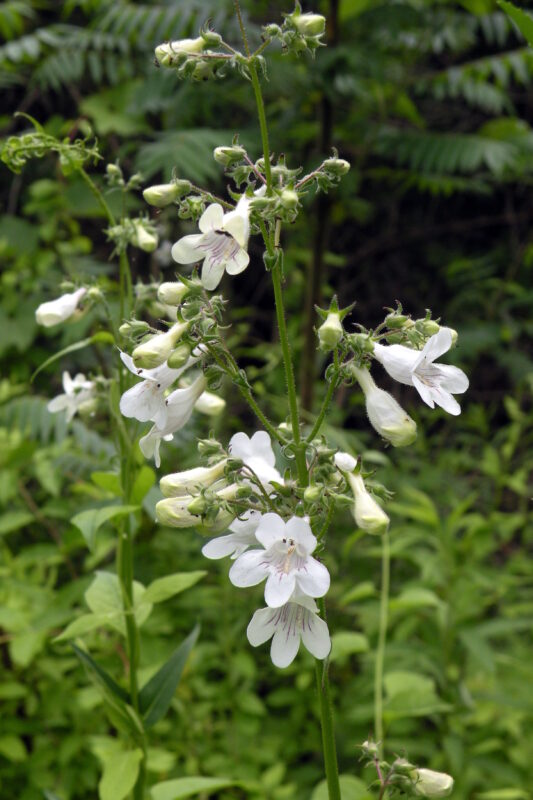
Beardtongue (Penstemon) adds a touch of whimsy and color to floral bouquets. With tubular flowers that often attract hummingbirds, these enchanting perennials thrive in sun-soaked gardens and well-drained soil. They bloom from late spring to summer, providing a splash of color and a source of intrigue.
In bouquets, beardtongue offers a unique architectural element, perfect for adding height. When combined with softer blooms like daisies or peonies, their structure creates a harmonious balance. These flowers can also bring a touch of woodland charm to any arrangement.
Bachelor’s Button
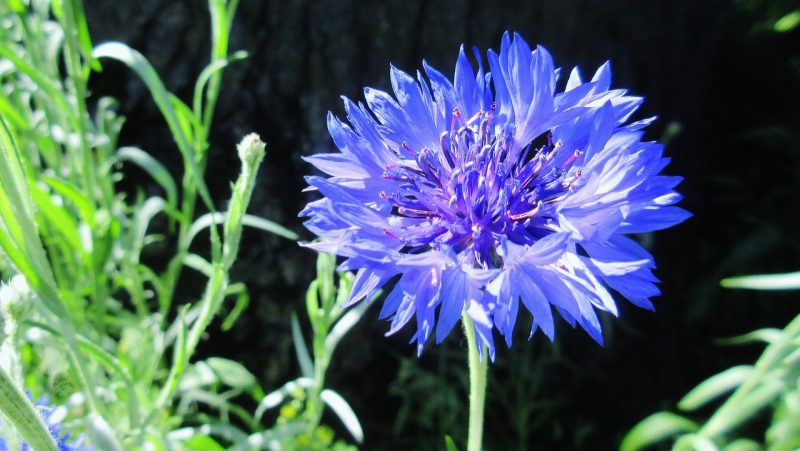
Bachelor’s buttons (Centaurea cyanus) are cherished for their vivid blue flowers and charming simplicity. These annuals bloom from spring to early summer and thrive in open, sunny spots. Their blue hue is a delightful addition to any bouquet, providing an enchanting contrast to other flowers.
When creating bouquets, bachelor’s buttons can serve as playful fillers or focal points, especially when paired with white flowers like daisies or yellow blooms like sunflowers. Their ability to attract beneficial insects makes them a gardener’s friend while enhancing the vibrancy of arrangements.
Starflower
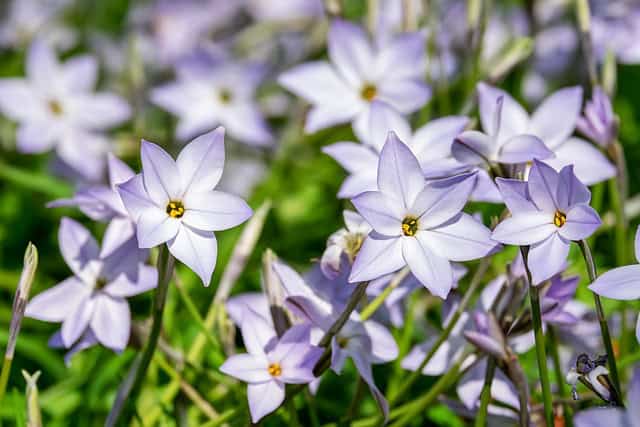
Starflower (Trientalis borealis) is praised for its charming blooms that resemble twinkling stars. These delicate perennials thrive in partial shade and rich, moist soils. Their white or pale blue flowers bloom in spring, adding softness to bouquets.
In arrangements, starflowers can add a unique touch, often used as lovely fillers. Their delicate appearance pairs beautifully with more robust flowers such as peonies or dahlias, creating an ethereal effect. Incorporating starflowers into your bouquets provides an element of surprise and whimsy.
Aster
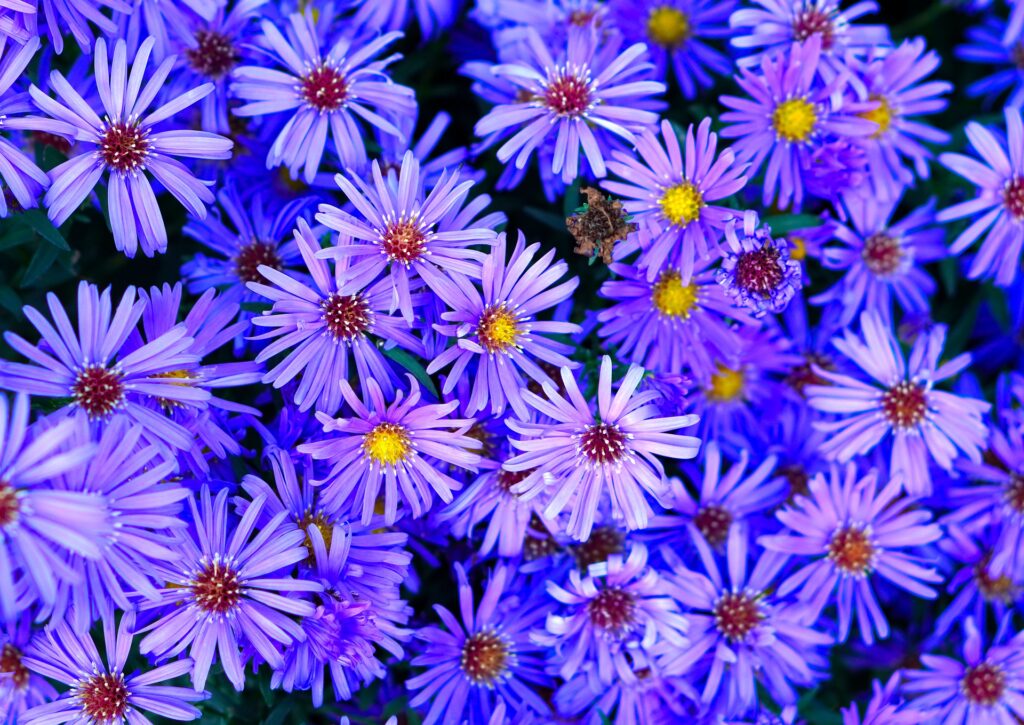
Asters are cherished for their late-summer blooms that burst forth in vibrant colors, ensuring gardens remain lively as summer wanes. With their zigzagging petals and rich hues of purple, pink, and white, asters thrive in full sun and well-drained soil.
These blooms are fantastic for bouquets, offering visual interest and texture. An arrangement featuring asters alongside sunflowers and cosmos can create a stunning display that celebrates autumn’s vibrancy. Asters not only brighten up bouquets but also invite pollinators to the garden, enhancing its overall health.
Cosmos
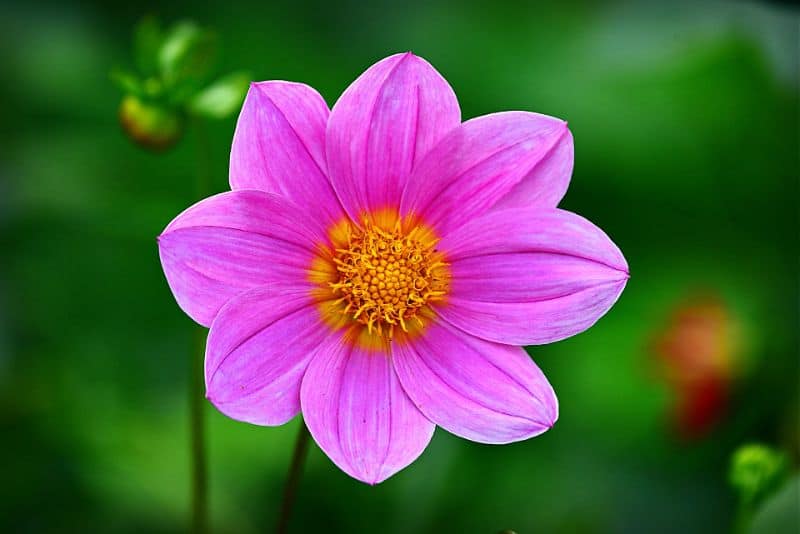
Cosmos are cheerful, daisy-like flowers celebrated for their easy-going nature and radiant colors. They bloom in shades of pink, white, and orange throughout the summer months and prefer sunny environments. Highly adaptable, cosmo plants thrive in a variety of soil conditions.
In arrangements, cosmos can add a lively touch, often used as fillers to create a garden-inspired look. They pair beautifully with more structured flowers like zinnias and with herbs for a rustic feel. With their delicate nature, cosmos make bouquets feel light and exuberant, radiating joy with every arrangement.
Mullein
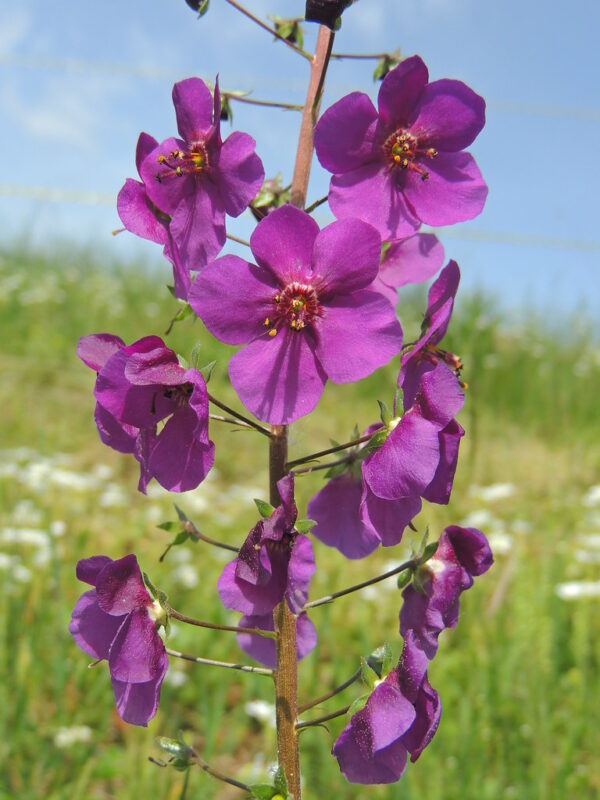
Mullein (Verbascum thapsus) is a striking biennial plant known for its tall flowering spikes adorned with yellow blooms. They thrive in sunny locations and can tolerate poorer soil conditions, making them an excellent choice for low-maintenance gardens.
In bouquets, mullein offers height and drama, standing out as a unique addition. Pair mullein with more delicate flowers like sweet peas or white daisies to create an eye-catching contrast. Their distinctive shape adds interest and individual character to arrangements.
Sweet William
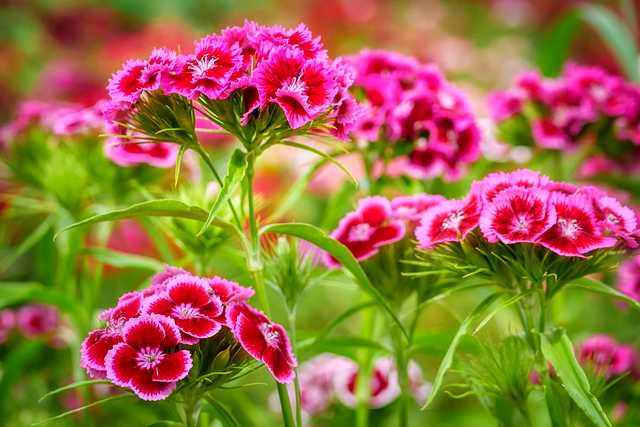
Sweet William (Dianthus barbatus) is a charming perennial flower, known for its clustered blooms and clove-like scent. These flowers thrive in sunny spots and are admired for their ability to bloom from late spring to summer in various colors.
In bouquets, sweet William serves as an exquisite filler with its soft, lacy appearance. They can be combined with bold flowers like peonies or dahlias to create stunning contrasts. Their delightful fragrance adds an additional layer of charm to arrangements, making them a favorite among bouquet lovers.
Larkspur
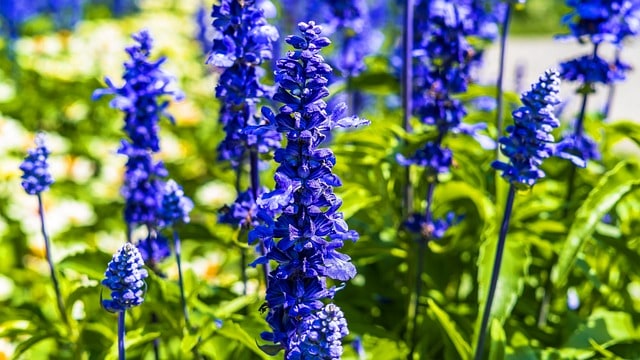
Larkspur (Delphinium) boasts tall spikes adorned with delicate blooms that come in a variety of blues, purples, and white shades. These hardy perennials prefer sunny spots with well-drained soil and add vertical beauty to any garden or bouquet.
In arrangements, larkspur can provide a stunning backdrop for other flowers, combining its height with the fullness of roses or peonies. Their elegant appearance invites admiration, transforming bouquets into artistic creations that capture the essence of nature’s beauty.
Statice
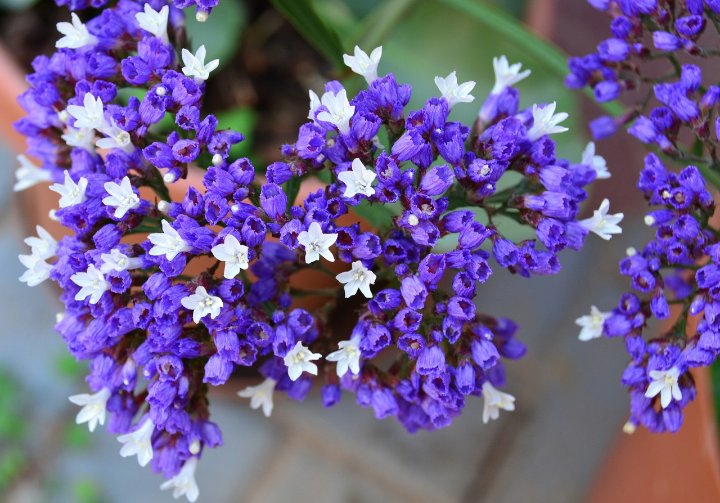
Statice (Limonium sinuatum) is a popular dried flower known for its long-lasting nature and vibrant colors. Its papery texture makes it an excellent filler in bouquets, adding depth and interest while also providing a low-maintenance option for long-lasting arrangements.
When incorporated into bouquets, statice pairs harmoniously with fresh blooms like sunflowers or zinnias. Their ability to hold color and form makes them ideal for creating visually captivating arrangements that can be cherished for extended periods, perfect for any occasion.
Flax
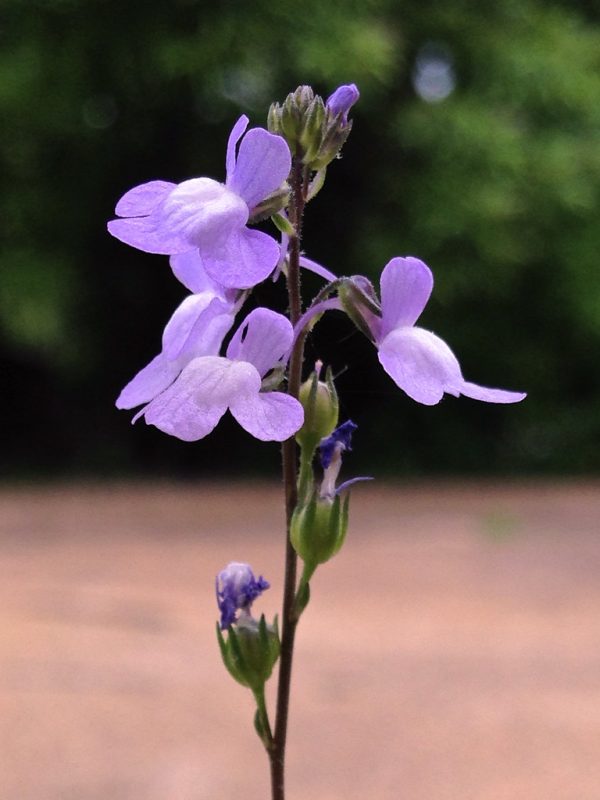
Flax (Linum usitatissimum) is a delightful flower known for its slender stems and delicate blue or white blossoms. This annual plant thrives in cooler climates and well-drained soil, often growing wild in meadows.
In bouquets, flax can provide an ethereal touch with its airy presence. Used as a filler, it works well with sunflowers or dahlias, creating a delightful contrast between delicate and bold blooms. The charm of flax lies in its simplicity, offering a sense of wildflower joy to any arrangement.
Lupine
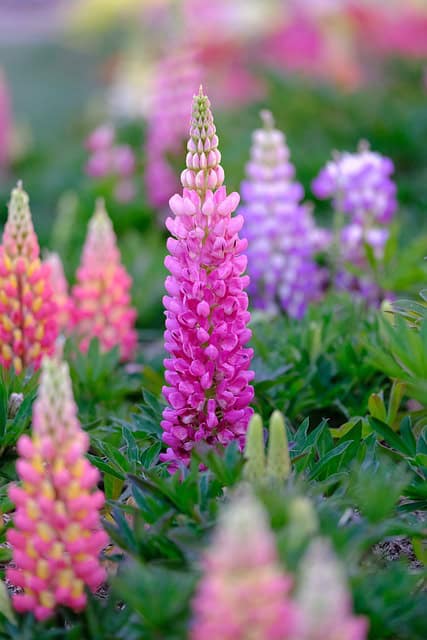
Lupine (Lupinus) is a striking perennial known for its tall flower spikes adorned with beautifully arranged blooms. Available in a rainbow of colors, lupine thrives in well-drained soil and sunny locations, bringing a splash of color to gardens.
For bouquets, lupines add stature and a burst of color, often used as impactful focal points. Pair them with delicate fillers like daisies or anemones to create elegant arrangements. Their cheerful appearance and ability to attract pollinators make them a worthy addition to any bouquet garden.
Orlaya
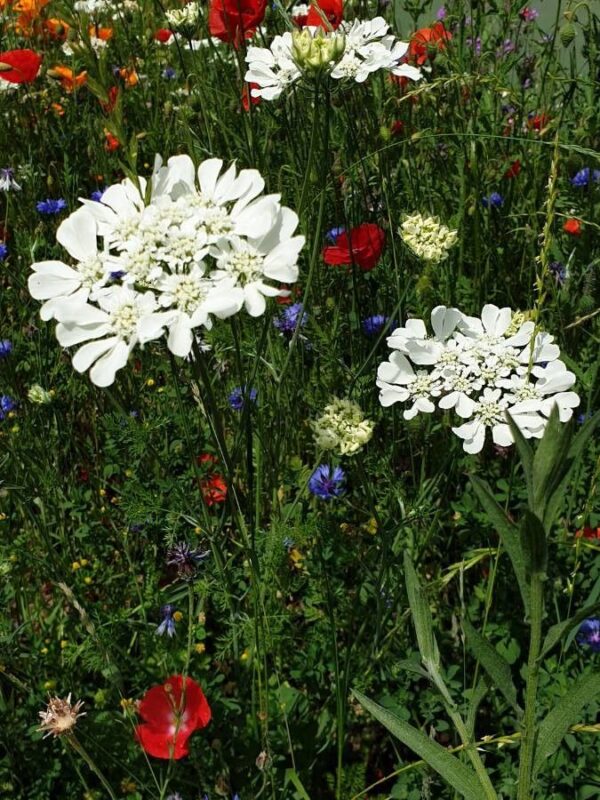
Orlaya (Orlaya grandiflora) is a lesser-known but captivating flower known for its delicate white blooms and lacy foliage. This annual plant thrives in well-drained soil and sunny environments. Its soft appearance adds a touch of whimsy and romance to bouquets.
In floral arrangements, orlaya works beautifully as a filler that provides a lacy, ethereal quality. Pair it with robust flowers like zinnias and dahlias for stunning contrasts. Its unique texture elevates any bouquet, making it a delightful surprise for recipients.
Queen Anne’s Lace
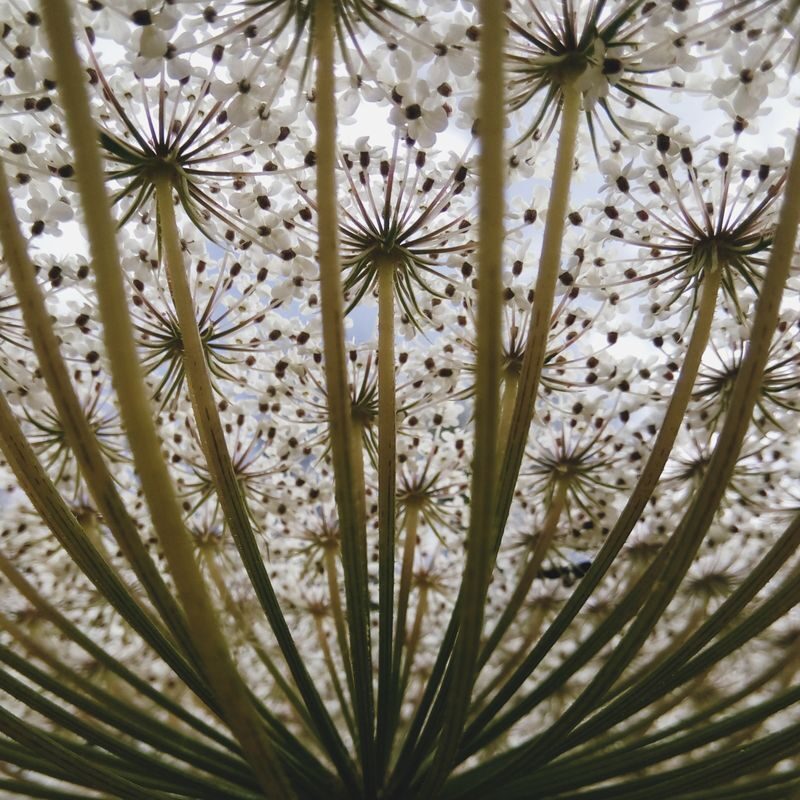
Queen Anne’s Lace (Daucus carota) is a wildflower admired for its intricate lace-like blooms. Often seen in fields and gardens, this biennial thrives in full sun and well-drained soil, adding rustic charm wherever it grows.
In bouquets, Queen Anne’s Lace serves as an exquisite filler that provides a light, airy feel. When combined with sunflowers or zinnias, they create stunning arrangements that embody a wildflower ethos. The delicate nature of these blooms gives bouquets a soft, romantic touch, ideal for gatherings or celebrations.
Sea Holly

Sea holly (Eryngium) is a unique flower characterized by its spiky appearance and metallic hues. These hardy perennials thrive in well-drained soil and offer intriguing textures to bouquets.
In arrangements, sea holly provides a striking contrast to softer blooms, acting as an architectural element. Pair it with traditional blooms like roses or peonies for an authentic garden feel. The exotic look of sea holly can bring a contemporary twist to classic bouquets, creating a visual feast for the senses.
Phlox
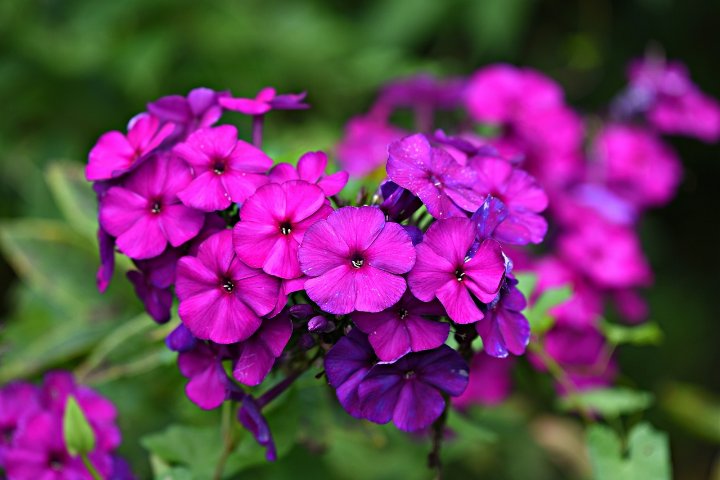
Phlox is a vibrant garden perennial admired for its fragrant clusters of flowers that bloom from mid-summer to fall. Available in various colors, phlox appreciates full sun and well-drained soil.
In floral arrangements, phlox adds color and rich fragrance, serving beautifully as focal points or vibrant fillers. Mix phlox with zinnias or cosmos for a joyful bouquet that welcomes each season’s vibrancy. Their long-lasting blooms ensure that your arrangements will stay fresh and beautiful for days.
Verbena
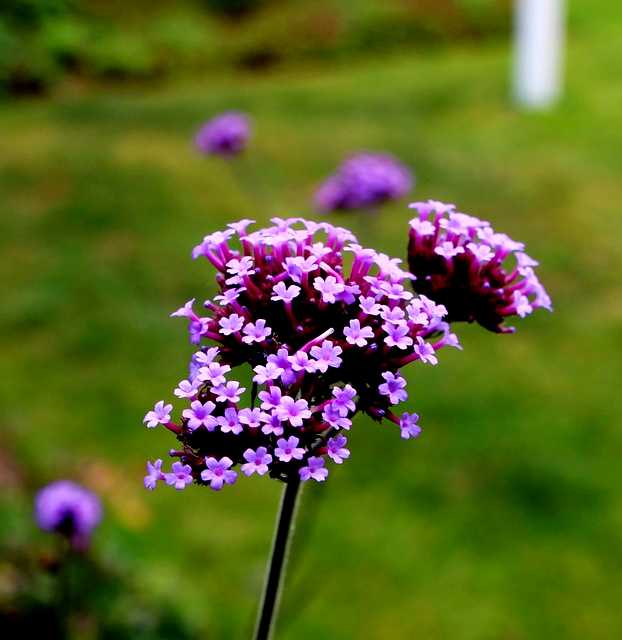
Verbena is a beloved flowering plant known for its abundance of colorful blossoms and ability to attract pollinators. These hardy perennials thrive in sunny locations and prefer well-drained soil, making them a low-maintenance option for any garden.
In bouquets, verbena brings cheerfulness and a sense of fullness, creating visually abundant arrangements. They pair fabulously with daisies or sunflowers for a vibrant summer bouquet that captures the essence of blooming joy. Their ability to attract butterflies enhances the garden’s allure, inviting nature’s beauty into your floral creations.


